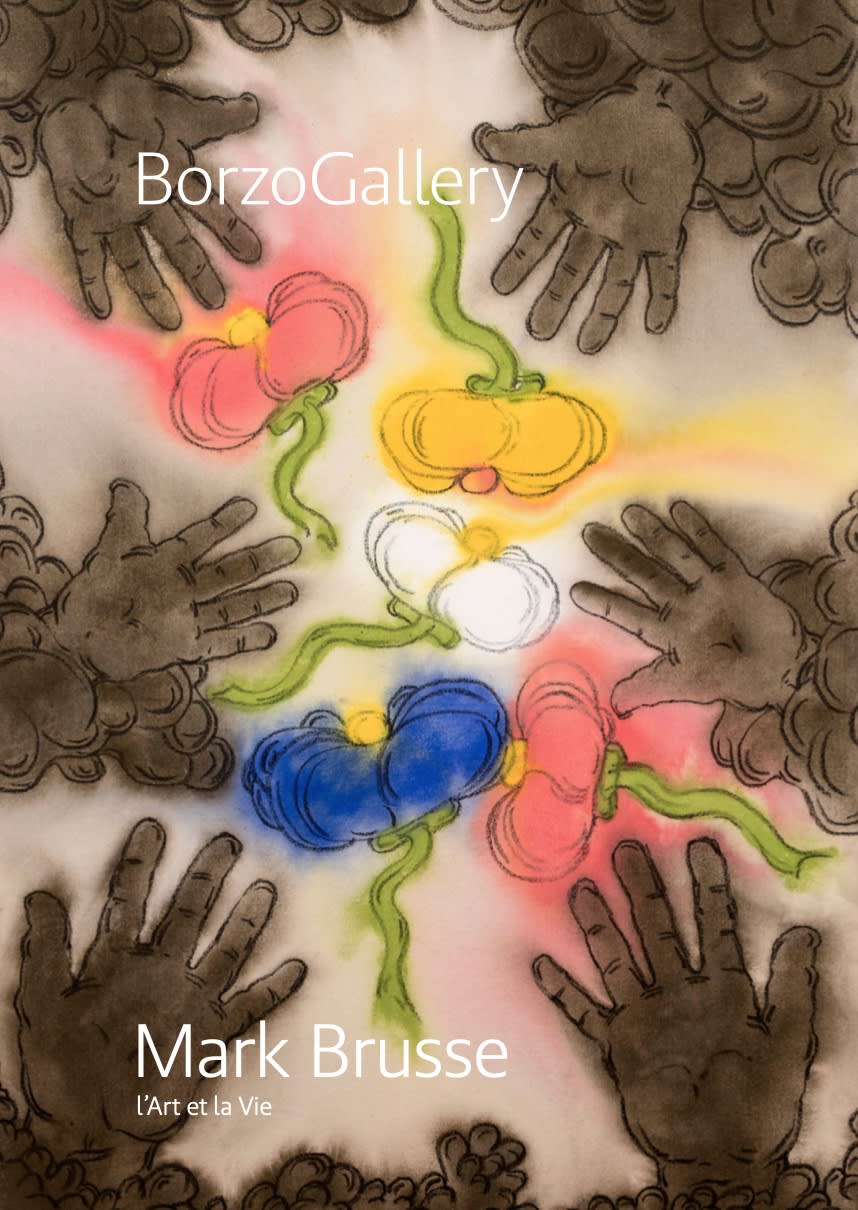Mark Brusse Dutch, b. 1937
Mark Brusse's life story reads like a novel; a succession of travel memoirs, artistic encounters, and multicultural influences.
Born in Alkmaar in 1937, in an artistic milieu of journalists, writers and actors, the young Mark spent most of his childhood in war-ravaged Nijmegen, after his mother remarried following the death of his father.
Having attended the academy in Arnhem, the 23-year-old artist left his native country in 1960 to settle in Paris, where he began his artistic career and adult life.
For Brusse, art is life and vice versa. His artistic life takes him on numerous journeys around the globe. There are few places he hasn't been, his huge sculptures can be found in many locations and he has been able to work wherever he went. He is still working to this day, whether in his Paris studio or on the coast at the furthermost tip of Brittany.
Paris
In Paris of the 1960s, Brusse is exposed to the Nouveau Réalisme championed by art critic Pierre Restany. He also encounters Robert Filliou and the Fluxus movement and related and befriended artists Yves Klein, Jean Tinguely, Arman, Raymond Hains and Daniel Spoerri. Declaring reality to be art was the manifesto of these 'nouveaux réalistes', who had international ties to Zero in Germany, Azimuth in Milan and Nul in the Netherlands.
New York
In 1965, Brusse relocates to New York, where he moves in the circles of the New York art scene: the Chelsea Hotel - where, among others, Jan Cremer lived - and Andy Warhol's The Factory. He befriends John Cage and meets Larry Rivers, Kusama, Rauschenberg, Nam June Paik, Claes Oldenburg and lots of other artists.
Japan and Korea
In 1983, Brusse has the opportunity to work in Japan for a few months - yet another completely different world. He discovers ceramics, as well as finding new modes of expression in working with paper and collage.
In 1987 and the ensuing years, he regularly spends periods of time in Korea where, among other things, he works on a huge sculpture for the Olympic park. It is there that he makes his first assemblages in bronze and discovers Hanji paper, on which he starts producing large paintings that are then glued onto canvas using the marouflage technique.
To Japan he will return regularly; he will meet his wife Nobuko there.
The influence of the Far East remains a constant in Brusse's oeuvre.
Paris and the world
From his permanent base in Paris, he heads off all over the world: Taiwan, Réunion, Ecuador, Argentina, and South Africa where, in 1996, he takes part in the 'Artists against Apartheid' exhibition and meets Nelson Mandela.
More recently, in 2017, he has spent some time in Benin, Africa.



